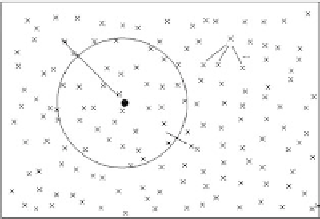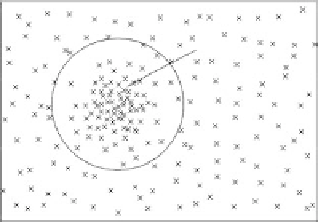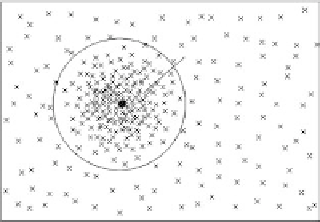Information Technology Reference
In-Depth Information
Cells involved in the
immune response
Primary antigen
B or T cells
Ball of stimulation
(a)
(b)
Secondary antigen
Memory cells
These cell cause an associative recall
(c)
(d)
Figure 7.14 Modeling immune memory as associative memory. (From Smith
D. J., S. Forrest and A. S. Perelson,
Artifi cial Immune Systems and Their
Applications, 1999
,
The International Conference on Multi-Agent Systems
,
Workshop Notes, Kyoto, 1996, 62-70.)
made some of the earliest attempts to use immune system metaphors in machine learn-
ing. h ey applied AINE (described in Chapter 5) to the problem of playing knots and
crosses. In this system, each B cell corresponded to a particular board state containing
a nine-digit antibody. h e good moves from one state to another meant that those
two B cells would have strong a
nity or a connection in the B cell network. Later,
this group also applied this algorithm to the domain of case-based reasoning. In this
system, each case is represented by a B cell object and the case memory is built with
the B cell network, with similar cases being linked together. h e memory was self-
organizing in nature.
7.9.3
Applications in Software Testing
May et al. (2007) presented an immune-inspired system based on CLONALG for
software test data. Generated test datasets are evaluated using the mutation testing
adequacy criteria and are used to direct the search of new tests. Mutation testing
generates versions of a program containing simple faults and then fi nds tests to
indicate the program's symptoms. h e developed immune system for mutation test-
ing is based on the clonal selection algorithm. A modifi ed version of CLONALG
to adapt it to the mutation testing problem, removing the concept of a memory














Search WWH ::

Custom Search